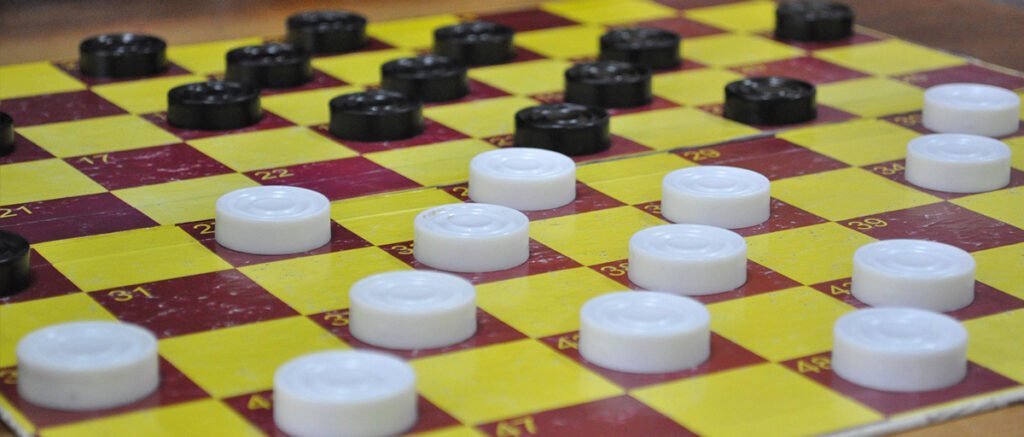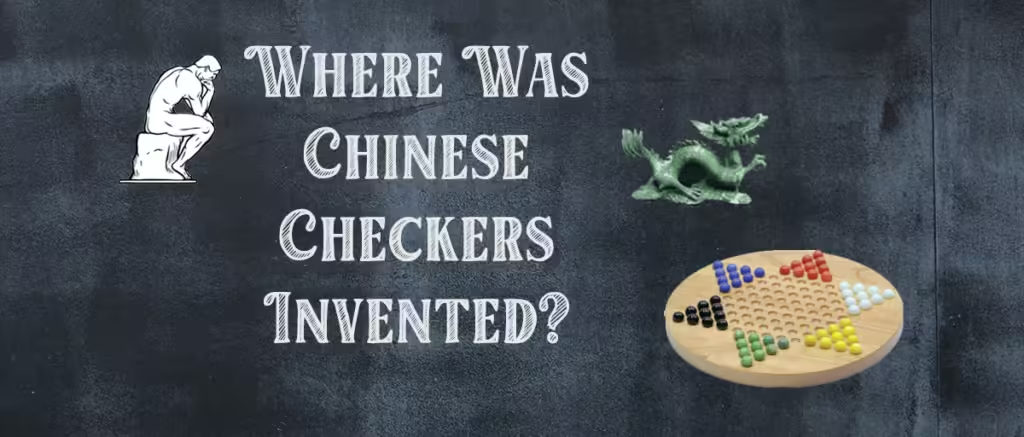Checkers, also known as draughts, is a popular board game that has been enjoyed by people of all ages for centuries. It requires strategy, critical thinking, and careful planning to outmaneuver your opponent and claim victory. In this article, we will explore some of the best checkers strategy tips to enhance your gameplay and increase your chances of winning.
Table of Contents
1. Master the Basics
Before diving into advanced strategies, it is crucial to have a solid understanding of the basic rules and mechanics of checkers. Ensure you are familiar with how the pieces move, capture, and when a player wins. Knowing the fundamentals will lay a strong foundation for implementing more complex tactics.
To master the basics of checkers, consider the following:
- Learn how each type of piece moves: Regular pieces can only move forward diagonally, while kings can move both forward and backward.
- Understand the concept of capturing: A piece can capture an opponent’s piece by jumping over it diagonally, removing it from the board.
- Familiarize yourself with the rule of mandatory captures: If there is an opportunity to capture an opponent’s piece, you must take it.
- Know the conditions for winning: In most cases, the game is won by either capturing all of your opponent’s pieces or putting them in a position where they cannot make any legal moves.
2. Control the Center
One key principle in checkers is to establish control over the center of the board. The center provides more mobility and flexibility for your pieces, allowing you to respond effectively to your opponent’s moves. Strive to occupy the central squares early on in the game to gain a positional advantage.
Controlling the center of the board offers several benefits:
- Increased mobility: By occupying the central squares, your pieces have more options for movement and can reach different areas of the board more easily.
- Defensive strength: Having a strong presence in the center allows you to better defend your own pieces and counter any aggressive moves from your opponent.
- Strategic flexibility: Being in control of the center gives you the ability to adapt to changing circumstances and adjust your tactics accordingly.
To gain control of the center, consider the following strategies:
- Move your pieces towards the central squares in the opening moves.
- Use your pieces to control key diagonal lines that pass through the center.
- Be mindful of potential trades and exchanges that can help you solidify your control over the center.
3. Develop a Strong Formation
Building a strong formation with your checkers pieces is essential for maintaining control and creating opportunities for advancement. Aim to create a solid structure by positioning your pieces on the dark squares, as these offer better defensive capabilities due to their diagonal alignment.
Developing a strong formation involves the following aspects:
- Piece coordination: Arrange your pieces in a way that they support each other, forming a network of interlocking threats and defenses.
- Centralization: Concentrate your pieces towards the center of the board to enhance their collective power and influence.
- Balance offense and defense: While it’s important to maintain a defensive stance, do not neglect the potential for launching attacks and seizing opportunities.
- Flexibility: Ensure that your formation allows for adaptability and maneuverability, enabling you to respond effectively to your opponent’s moves.
To develop a strong formation, consider the following strategies:
- Position your pieces in such a way that they protect each other and create a blockade for your opponent.
- Avoid leaving vulnerable pieces isolated and prone to capture.
- Maintain a balance between offense and defense by strategically positioning your pieces on the board.
4. Utilize the Double Corner Opening
The double corner opening is a popular and effective strategy to initiate the game. Begin by placing two pieces on your back row diagonally opposite each other, occupying the corners. This formation provides greater mobility and options for your other pieces to develop later in the game.
The double corner opening offers several advantages:
- Quick development: By placing pieces in the corners, you allow for faster and more efficient piece development, as they have fewer obstacles in their path.
- Increased flexibility: The double corner opening provides multiple options for your subsequent moves, allowing you to adapt to your opponent’s strategy.
- Defensive strength: By occupying the corners, you create a solid foundation that is difficult for your opponent to break through.
To utilize the double corner opening effectively, consider the following:
- Place your pieces on the corners of your back row, ensuring they are diagonally opposite each other.
- Develop other pieces in a way that complements the initial formation, maintaining flexibility and strategic options.
- Be mindful of potential weaknesses and plan your subsequent moves accordingly to maintain control.
5. Safeguard Your King
Promoting your checkers piece to a king offers significant advantages, including increased mobility and the ability to move both forward and backward. Protecting your king becomes crucial as it is a valuable asset. Avoid exposing your king unnecessarily and develop defensive measures to prevent your opponent from capturing it.
Safeguarding your king involves the following considerations:
- King’s mobility: Take advantage of the increased mobility of the king to position it strategically on the board, allowing it to respond effectively to your opponent’s moves.
- Defensive positioning: Surround your king with other pieces to provide a protective barrier against your opponent’s attacks.
- Avoid unnecessary risks: Be cautious when exposing your king to potential captures, especially in the early stages of the game.
- Counterattack opportunities: Use your king’s versatility to create counterattack possibilities, forcing your opponent to make defensive moves.
To safeguard your king effectively, consider the following strategies:
- Maintain a strong formation around your king, utilizing other pieces to protect it.
- Avoid moving your king unnecessarily, unless it offers tactical advantages or improves its overall position.
- Be vigilant and anticipate your opponent’s attempts to capture your king, adjusting your defensive measures accordingly.
6. Plan Ahead
Checkers is not just about making moves on the fly; it requires strategic planning. Anticipate your opponent’s moves and formulate counter-strategies. Think multiple steps ahead, considering various scenarios and potential outcomes. Planning ahead will give you a competitive edge and help you make informed decisions.
Planning ahead involves the following steps:
- Assess the current game state: Analyze the position of the pieces, the control over the board, and any potential threats or vulnerabilities.
- Identify your opponent’s possible moves: Anticipate the most likely moves your opponent might make in the next few turns.
- Formulate response strategies: Plan your own moves based on your opponent’s potential actions, considering the best possible counter-strategies.
- Evaluate potential outcomes: Assess the consequences of different moves, weigh the risks and rewards, and choose the most advantageous path.
To plan ahead effectively, consider the following strategies:
- Regularly reassess the game state to adapt your plan as the situation evolves.
- Analyze the strengths and weaknesses of your own position and your opponent’s position to make informed decisions.
- Consider long-term goals and potential sacrifices to gain strategic advantages.
7. Take Advantage of Forced Captures
Forced captures, also known as hopping or jumping, occur when you have the opportunity to capture your opponent’s piece by jumping over it. Always be on the lookout for forced captures as they provide tactical advantages, such as eliminating multiple pieces or gaining positional superiority.
Taking advantage of forced captures involves the following considerations:
- Identifying forced capture opportunities: Look for situations where you can create a sequence of jumps that forces your opponent to lose multiple pieces.
- Evaluating the risks and rewards: Assess the potential gains from a forced capture against the potential risks of leaving your pieces vulnerable or losing positional advantage.
- Timing and patience: Sometimes, it is strategically advantageous to delay a forced capture to set up a more favorable position or to create additional threats.
To take advantage of forced captures effectively, consider the following strategies:
- Prioritize forced captures that lead to significant material or positional advantages.
- Plan ahead and set up situations where your opponent is forced to make moves that result in beneficial captures for you.
- Be mindful of potential counter-attacks or traps set up by your opponent in response to forced captures.
8. Maintain Proper Piece Balance
Maintaining a proper balance between offense and defense is crucial in checkers. While it is important to go on the offensive and capture your opponent’s pieces, neglecting defensive measures can leave your own pieces vulnerable to counterattacks. Strive for a balanced approach to ensure a strong and sustainable position.
Maintaining proper piece balance involves the following considerations:
- Assessing the current game state: Regularly evaluate the balance between your offensive and defensive capabilities, considering the material count and positional factors.
- Adjusting strategy as needed: If you have a material advantage, focus on pushing your advantage and maintaining pressure. If you are at a disadvantage, prioritize defensive measures and look for opportunities to equalize.
- Exploiting weaknesses: Identify weaknesses in your opponent’s position and exploit them strategically, combining offensive maneuvers with defensive precautions.
To maintain proper piece balance effectively, consider the following strategies:
- Continuously reassess the state of the game and adjust your strategy accordingly.
- Strike a balance between capturing your opponent’s pieces and protecting your own.
- Be proactive in developing your pieces and creating threats while being mindful of potential counterattacks.
9. Learn from Expert Games
Studying games played by expert checkers players can provide valuable insights and inspiration for your own gameplay. Analyze their strategies, tactics, and decision-making processes. Many online platforms and resources offer access to recorded games, allowing you to learn from the best and adapt their techniques to your own style.
Learning from expert games involves the following steps:
- Analyzing strategic choices: Study the decision-making process of expert players, understanding why they choose certain moves or strategies.
- Identifying patterns and themes: Look for recurring patterns, maneuvers, or tactical ideas that successful players utilize consistently.
- Adapting to your own style: While it is beneficial to learn from experts, adapt their techniques to suit your own playing style and strengths.
To learn from expert games effectively, consider the following strategies:
- Watch recorded games or live streams of professional checkers players to observe their thought processes and techniques.
- Take notes and analyze the reasoning behind their moves, focusing on strategic considerations and long-term planning.
- Practice implementing the strategies and tactics you learn from expert games, gradually incorporating them into your own gameplay.
10. Practice, Practice, Practice
Like any skill, becoming proficient in checkers requires practice. Regularly engage in matches with opponents of varying skill levels to challenge yourself and improve your gameplay. Reflect on your performance, learn from your mistakes, and refine your strategies. The more you practice, the better you will become.
To make the most of your practice sessions, consider the following:
- Play against different opponents: Engage with players of varying skill levels to expose yourself to different playing styles and strategies.
- Analyze your games: After each match, review your moves and identify areas for improvement. Look for missed opportunities, tactical errors, or weaknesses in your strategy.
- Experiment with new tactics: Use practice sessions to try out new strategies or techniques, expanding your repertoire of moves and responses.
In conclusion, mastering checkers strategy requires a combination of knowledge, planning, and practical experience. By following these tips and continuously honing your skills, you can elevate your gameplay and increase your chances of winning. Embrace the challenge, stay adaptable, and enjoy the intellectual thrill that checkers provides.
Checkers Strategy FAQ
1. What should I prioritize when learning checkers?
It is important to master the basics of checkers, including understanding how each piece moves, the concept of capturing, the rule of mandatory captures, and the conditions for winning.
2. How can I gain an advantage in checkers?
Controlling the center of the board is a key principle in checkers. By occupying the central squares, your pieces have increased mobility, defensive strength, and strategic flexibility.
3. How do I develop a strong formation in checkers?
To develop a strong formation, focus on piece coordination, centralization, balance between offense and defense, and flexibility. Position your pieces to protect each other and create a blockade for your opponent.
4. What is the double corner opening in checkers?
The double corner opening is a popular strategy where you place two pieces on your back row diagonally opposite each other, occupying the corners. This formation allows for quick development, increased flexibility, and defensive strength.
Affiliate Disclosure
Some of the links on Draughts.biz are affiliate links. This means that we may earn a small commission if you click through and make a purchase, at no additional cost to you. Please note that our product reviews and roundups are independent, and the affiliate relationships do not influence our content in any way.
Draughts.biz is a participant in the Amazon Services LLC Associates Program, an affiliate advertising program designed to provide a means for sites to earn advertising fees by advertising and linking to Amazon.com.
Amazon and the Amazon logo are trademarks of Amazon.com, Inc. or its affiliates.
Our passion for board games extends far beyond the checkers board. We’ll be your trusted companion, on a journey through the enchanting realms of not only checkers (or draughts) but also chess, backgammon, dominoes, mahjong, and a diverse array of other captivating board games.
Whether you’re in search of the ideal chess set, the best chess books, a chinese checkers set, a checkers set, or if you’re seeking the excitement of a thrilling game of mahjong solitaire, we’ll guide you along the way. In partnership with our affiliates, we bring you an extensive selection of board games and past times to explore and enjoy.
Dive into our extensive collection of guides and reviews, and unlock the joy and exhilaration that board games offer. From exquisitely crafted game pieces to the essential accessories that elevate your gaming experience, we’re here to guide you through it all with ease and delight.
Join us in celebrating the timeless allure and camaraderie that these games nurture, one post at a time!




